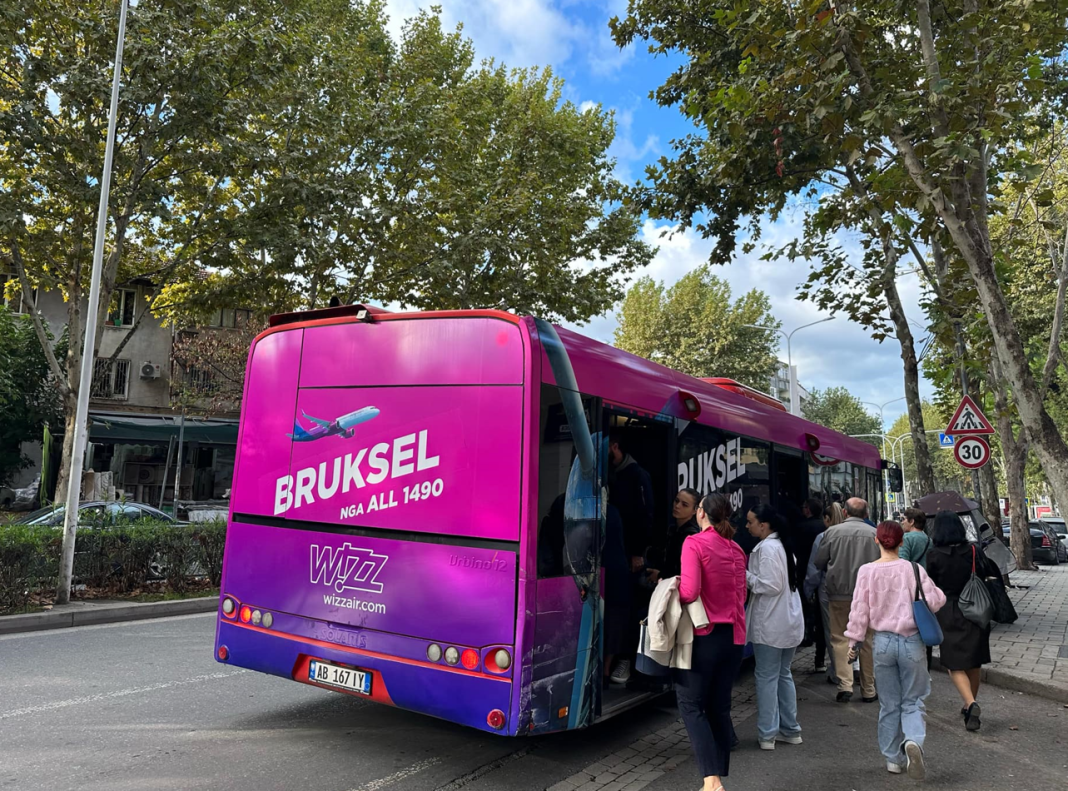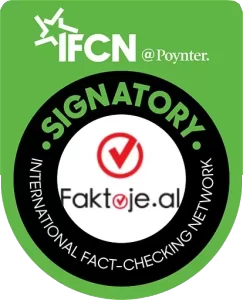Ilda Hoxha
Dozens of residents in Tirana and other cities have expressed through a survey by Faktoje that public transport is one of the main issues neglected by local authorities, while they seek solutions for service quality and the avoidance of delays.
Shpëtim Bendaj shares his life between Berat and London, and he asserts that the significant differences between the two cities begin with public transport.
‘When I arrive in London with my wife and son, the buses are already organized at the airport based on their destinations and stations. Every city in Great Britain and central stations has its own bus and train routes,’ he explains.
Unlike Great Britain, in Bendaj’s hometown, public transport does not serve all areas. This issue is not limited to the city of Berat.
‘This situation is not present in either Tirana or Berat, as I also use public transport in Tirana. In Berat, public transport is only available in populated areas and does not cover all zones. Additionally, in Berat, public transport stops operating after 10 PM,’ he remarked.
Many other citizens expressed to Faktoje through an online survey that the quality of public transport in Albania is regarded as poor or very poor, while they deal with delays, overcrowding, and insufficient conditions in urban buses.
The survey was completed by 76 citizens, with 92 percent living in Tirana, and half of them being daily users of urban public transport.
Around 80% of respondents assessed the service quality as very poor (54%) or poor (25%), while just 6% rated it as good. The respondents assessed the overcrowding of buses and delays as the main problems, followed by the lack of air conditioning and heavy traffic.
Experts align with citizens, noting that public transport in Tirana is in a state of coma. Urbanist Gentjan Kaprata attributes this situation to the slow speeds at which buses operate, delays at stations, and the poor quality of the vehicles.
‘In Tirana, buses only travel at speeds of up to 7 km/h; this is unimaginable for a service like this,’ Kaprata remarked to Faktoje.
‘Certainly, not all routes are the same, but this reflects the average situation,’ he added.
Dashnor Memaj, the Head of the Transport Association, also acknowledges these issues, but emphasizes that the responsibility does not lie solely with the operators. According to Memaj, it is essential for public transport vehicles to have dedicated lanes, which is the responsibility of state authorities.
‘Citizens certainly seek a better quality of service, both in terms of infrastructure and the condition of the vehicles. This is not entirely 100% under the operators’ control, which means that dedicated lanes, stations, and schedules are essential,’ Memaj stated.
‘By doing this, buses can operate at higher speeds, preventing queues at subsequent stations and avoiding overcrowding,’ he added.
Responsibility of the Municipalities
Public transport quality is a widespread concern across Albania, primarily due to inadequate investment and the financial capacity of citizens to pay for improved services. This issue is particularly evident in Tirana, where nearly one-third of the country’s population lives in a city that expands daily.
Denis is one of the daily users of the Porcelani line to commute to work. He says that he regularly deals with delays, overcrowding, and a lack of cleanliness.
‘All routes are completely overcrowded. They have hygiene issues and the air conditioning not being turned on. Additionally, delays are common. Overcrowding is especially severe in the mornings, but it also occurs throughout the day,’ he explains.
Xheni shares a similar experience, as she needs to transfer between two lines every morning to reach her job. She said to Faktoje that she primarily uses the Institut-Qendër and Unaza lines, both of which are lacking in air conditioning systems.
‘The ventilation and air conditioning systems are completely unused. When they are used, it’s only during peak times in the summer or winter. The urban buses come from Western and Northern Europe, which have climates very different from ours. However, even when the air conditioning is operating, it is almost ineffective,’ she wrote for Faktoje.
Other urban bus lines in Tirana face similar problems. The Qendër-Sanatorium line, which links the city to one of the largest hospitals in the country—’Shefqet Ndroqi’ University Hospital —is reported by users to have a limited number of buses available.
‘Every 60 minutes, a bus arrives at a crucial location like the university hospital ‘Shefqet Ndroqi,’ resulting in overcrowding, a lack of air conditioning, and, as a final straw, heavy traffic at the Sanatorium where buses park every day in the designated bus parking area,’ writes one user.
Citizens are holding local authorities accountable for the poor quality of service and are demanding increased attention from municipalities to address these issues.
Approximately 90% of respondents indicate that public transport does not receive the necessary attention from local governments, while 74% directly blame the municipalities for the low quality of this service.
Private Operators Call for Solutions
Dashnor Memaj from the Transport Association states that the efforts of private operators are limited, and emphasizes the need for government support and a long-term public transport policy to improve service quality.
According to Memaj, private operators are unable to update their bus fleets due to rising maintenance and labor costs. He also points out that government assistance is lacking, while the subsidies for students and other vulnerable groups fall short of covering costs.
‘The challenge for operators is that they lack certainty about how operations will proceed and what the economic climate will be, especially as all costs—including maintenance and worker salaries—continue to rise,’ Memaj stated.
‘Our requests have been persistent, but they have never been seriously considered for fulfillment,’ he added.
Urban planner Gentjan Kaprata shares the view that the government cannot solely rely on private operators to address public transport issues and that intervention is needed through the shared budget, funded by citizens’ taxes to the municipalities.
Kaprata says that if the situation remains unchanged, the companies operating urban transport lines in Tirana could face bankruptcy within the next 2-3 years.
‘We should intervene using our shared budget, specifically the budget of the Municipality of Tirana, where we all contribute as citizens. This service should be subsidized, but we must also ensure it meets quality standards,’ Kaprata proposes.
He also emphasized that a preferable solution would be to establish a legal framework that allows ticket prices to reflect the cost of providing a high-quality public transport service in Tirana, while the Municipality should monitor profit margins parallel to the improvements in service quality.










